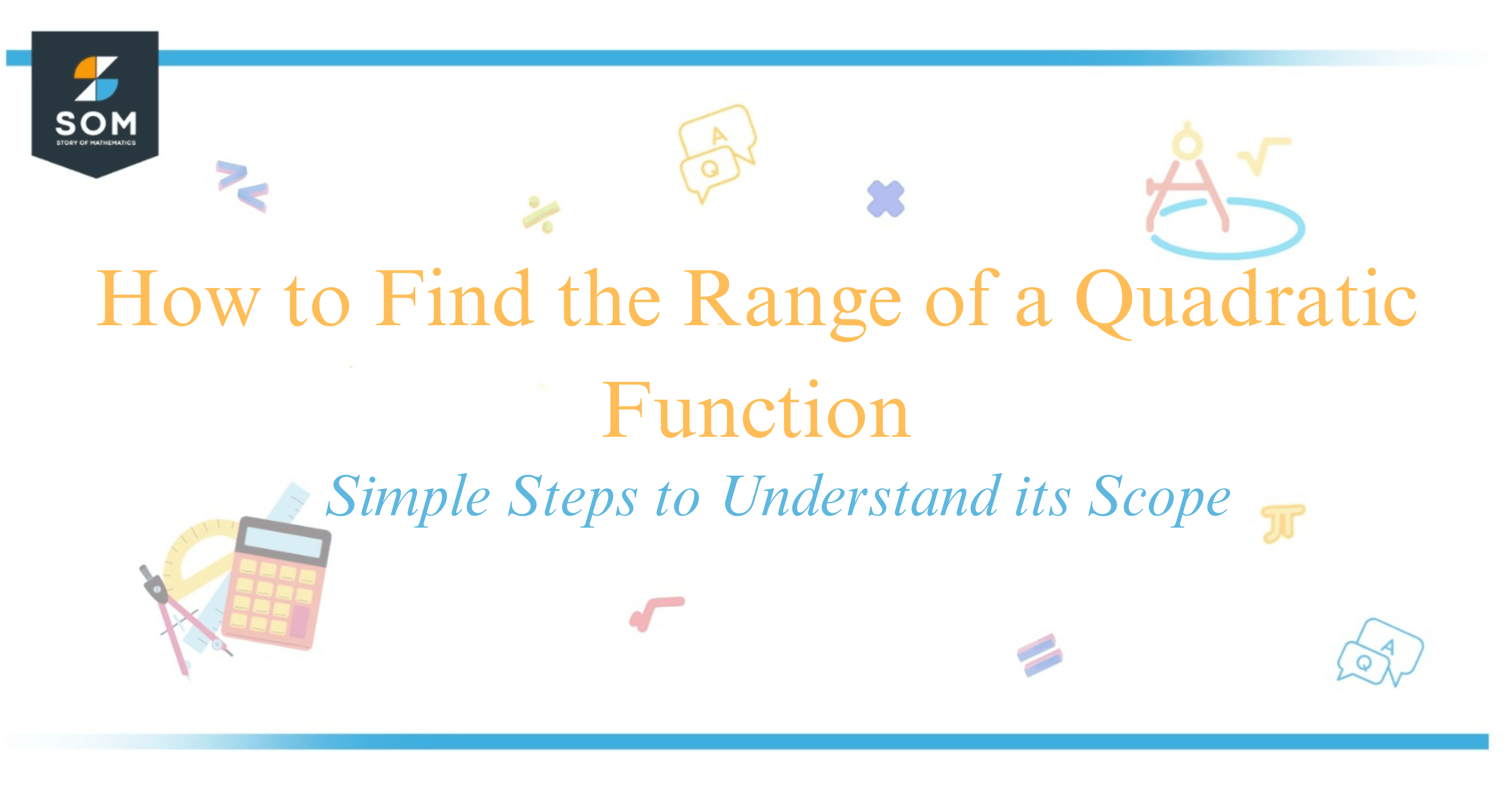
To find the range of a quadratic function, you should first understand the basic form of a quadratic function, which is $y = ax^2 + bx + c$, where $a$, $b$, and $c$ are constants, and $a \neq 0$.
This equation represents a parabola when graphed on the coordinate plane, and its range is the set of possible values that $y$ can take.
The domain, on the other hand, generally includes all real numbers since a parabola extends infinitely in either direction along the x-axis.
The range of a quadratic function is dependent on the direction of the parabola. If the parabola opens upwards (meaning $a > 0$), the range will be all real numbers greater than or equal to the minimum value of $y$, which is the y-coordinate of the vertex of the parabola.
Conversely, if the parabola opens downwards ($a < 0$), the range consists of all real numbers less than or equal to the maximum value of $y$. Determining the vertex and knowing whether the parabola opens up or down allows me to establish the range of the function.
As we walk through the process, remember that exploring the behavior of quadratic functions gives us insights into many physical phenomena described by parabolic curves, such as the path of a ball thrown into the air.
Finding the range helps us predict and understand the limitations of these phenomena. Stay tuned to unlock the secrets of these captivating curves.
Determining the Range of a Quadratic Function
When I’m trying to determine the range of a quadratic function, I consider the shape and properties of its graph, which is a parabola. A quadratic function has the general form $f(x) = ax^2 + bx + c$, where $a$, $b$, and $c$ are constants, and the graph is a u-shaped curve (parabola).
First, I identify the vertex of the parabola, which is the point where the parabola has either its maximum or minimum value.
The vertex has the coordinates $\left(h, k\right)$ and lies on the axis of symmetry of the parabola. The equation for the axis of symmetry is $x = -\frac{b}{2a}$.
The direction in which the parabola opens depends on the leading coefficient $a$. If $a > 0$, the parabola opens upward, and the vertex represents the minimum value of the quadratic function.
If $a < 0$, it opens downward, making the vertex the maximum value.
To state the range in interval notation:
- If the parabola opens upward: $\text{Range} = [k, \infty)$
- If the parabola opens downward: $\text{Range} = (-\infty, k]$
Here’s a table to visualize this concept:
| Leading Coefficient $a$ | Parabola Opens | Vertex Represents | Interval Notation |
|---|---|---|---|
| $a > 0$ | Upward | Minimum Value | $[k, \infty)$ |
| $a < 0$ | Downward | Maximum Value | $(-\infty, k]$ |
To find the vertex, we can use the vertex form of a quadratic function, $f(x) = a(x – h)^2 + k$. Alternatively, we may need to use methods like completing the square or applying the quadratic formula to find the vertex from the standard form.
Remember, the range describes all possible output values of $y$ based on the domain we are interested in. It’s also the set of outputs of the quadratic function where $y$ is a non-negative number.
Using a graphing calculator can also aid in visualizing the vertex and the parabola‘s symmetric properties to confirm the range.
For quadratic functions of degree two, the range is always an interval, with the vertex indicating the extreme point—either the minimum or maximum.
Knowing whether the parabola opens up or opens down helps determine the range appropriately.
Conclusion
In this discussion, I’ve outlined the process to determine the range of a quadratic function.
Remember that the key step is finding whether the parabola opens upward or downward, which you can deduce from the sign of the coefficient a in the quadratic function $f(x) = ax^2 + bx + c$. If a > 0, the parabola opens upward, indicating that the range is from the y-coordinate of the vertex to infinity.
Conversely, if a < 0, the function opens downward, and the range will be from negative infinity to the y-coordinate of the vertex.
Determining the vertex (( h, k )) is crucial because it represents either the minimum or maximum value of ( f(x) ), depending on the orientation of the parabola. The vertex formula $h = -\frac{b}{2a}$ and $k = f(h)$ is essential in finding these coordinates.
I trust you now feel confident in identifying the range of any quadratic function by applying the appropriate method and using the standard or general form of the quadratic equation.
Be mindful of the value you obtain for k since it is the starting or ending point of your range.
Acquiring the range of a function is not just a mechanical process but a foundational skill in algebra that can elevate your understanding of how functions behave. And remember, practice makes perfect – so don’t hesitate to apply these techniques to as many problems as you can.
